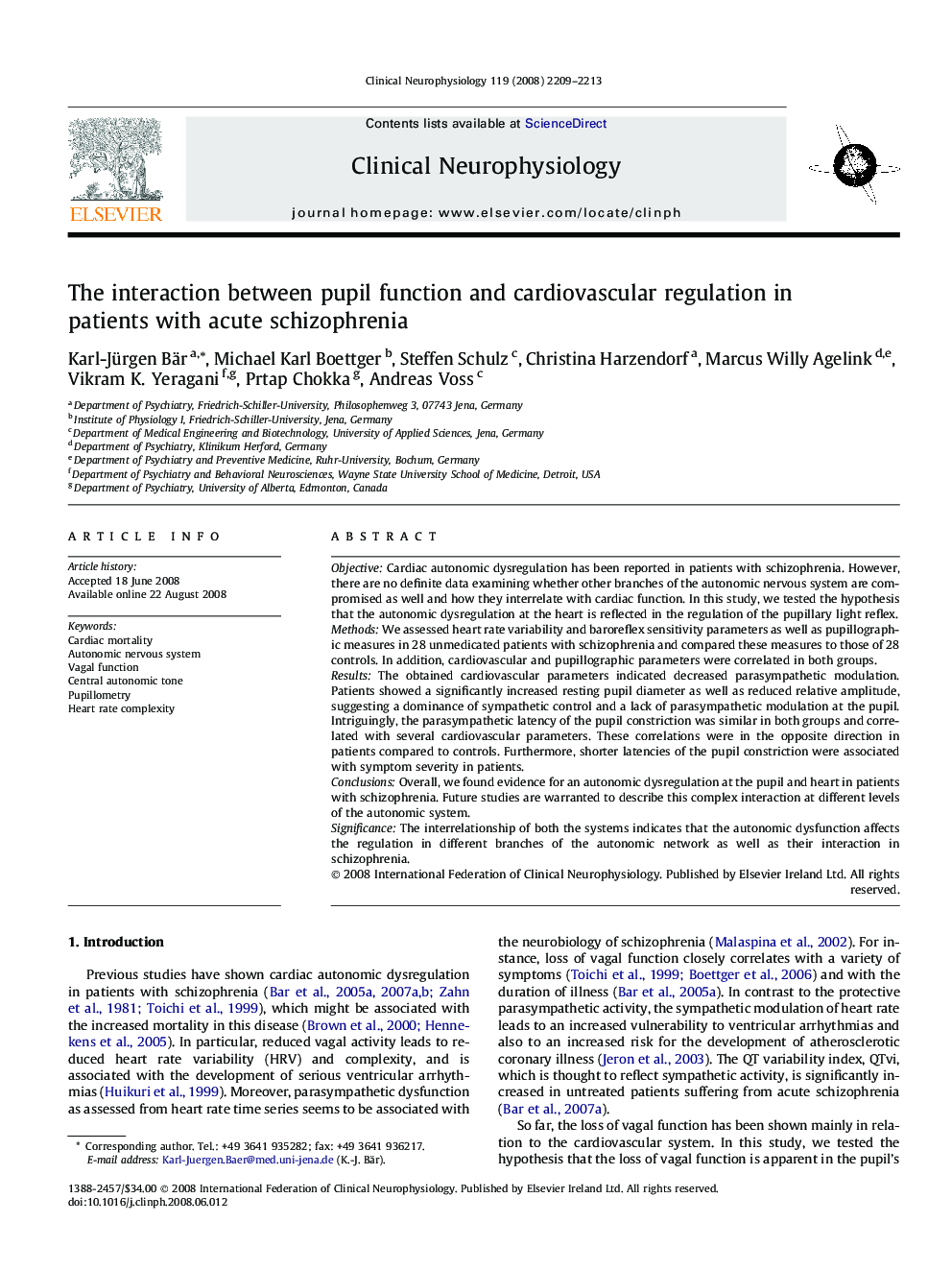| Article ID | Journal | Published Year | Pages | File Type |
|---|---|---|---|---|
| 3046453 | Clinical Neurophysiology | 2008 | 5 Pages |
ObjectiveCardiac autonomic dysregulation has been reported in patients with schizophrenia. However, there are no definite data examining whether other branches of the autonomic nervous system are compromised as well and how they interrelate with cardiac function. In this study, we tested the hypothesis that the autonomic dysregulation at the heart is reflected in the regulation of the pupillary light reflex.MethodsWe assessed heart rate variability and baroreflex sensitivity parameters as well as pupillographic measures in 28 unmedicated patients with schizophrenia and compared these measures to those of 28 controls. In addition, cardiovascular and pupillographic parameters were correlated in both groups.ResultsThe obtained cardiovascular parameters indicated decreased parasympathetic modulation. Patients showed a significantly increased resting pupil diameter as well as reduced relative amplitude, suggesting a dominance of sympathetic control and a lack of parasympathetic modulation at the pupil. Intriguingly, the parasympathetic latency of the pupil constriction was similar in both groups and correlated with several cardiovascular parameters. These correlations were in the opposite direction in patients compared to controls. Furthermore, shorter latencies of the pupil constriction were associated with symptom severity in patients.ConclusionsOverall, we found evidence for an autonomic dysregulation at the pupil and heart in patients with schizophrenia. Future studies are warranted to describe this complex interaction at different levels of the autonomic system.SignificanceThe interrelationship of both the systems indicates that the autonomic dysfunction affects the regulation in different branches of the autonomic network as well as their interaction in schizophrenia.
